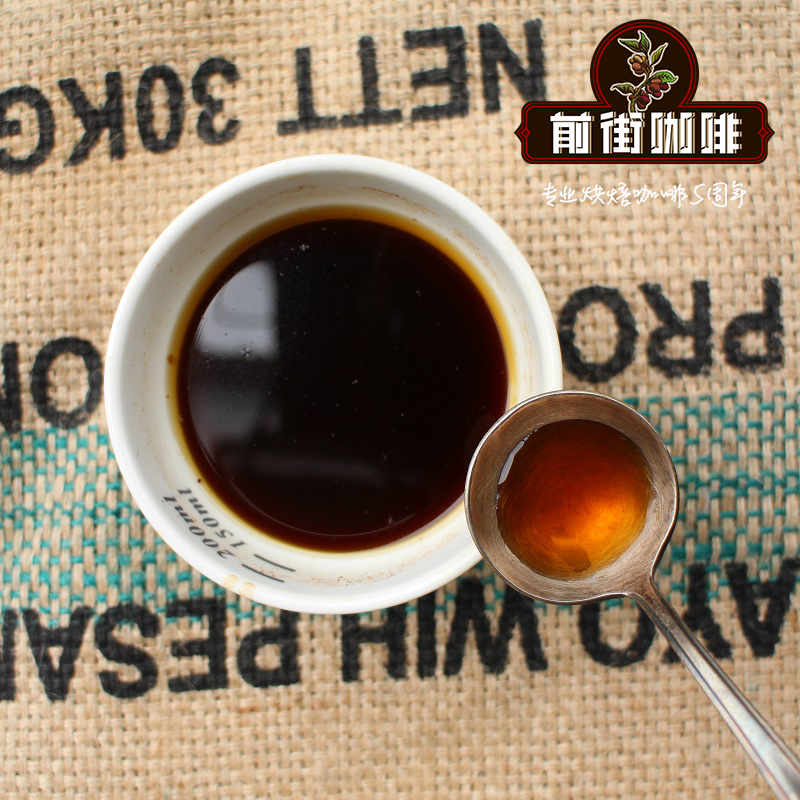What is the treatment of Bolivian grape sour coffee beans? is there a big difference in coffee bean taste?

Professional coffee knowledge exchange more coffee bean information please follow the coffee workshop (Wechat official account cafe_style)
Bolivia is one of the poorest countries in Latin America, a landlocked country bordering Brazil and Colombia. The origin of coffee in Bolivia can be traced back to 1880, when all production was basically related to the owners of some large farms north of La Paz. In 1991, the government promoted a program for aborigines to grow coffee, but paid little attention to quality.
The ideal planting conditions, coupled with the launch of the excellent Cup, mean that Bolivian coffee exports have reached an all-time high.
The history of Bolivian coffee is very interesting, although it is a country with great potential for coffee exports, its production has been quite scarce and the conditions for growing coffee are excellent, but the challenges are also extremely difficult. the result is an extraordinarily rich agricultural history built on a very difficult land.
The main problem for coffee farmers has always been that it is difficult for them to earn enough money to support the long-term cultivation of coffee. In order to subsidize the shortage of coffee, they have to grow other crops, mainly coca, which can be used to make cocaine, and it is legal to grow coca in Bolivia. Encouraged by the government, coca leaves are four times as profitable as coffee and much easier than growing coffee, causing many farmers to abandon coffee or even give up farms altogether.
The cultivation of coca requires the use of a large number of chemical pesticides and fertilizers, which do great damage to the soil. In other words, after several years of planting coca, the soil becomes barren and can no longer grow any crops. In early 2000, the United States strongly supported Bolivian agriculture, but coffee farmers suffered the most because the Bolivian government later supported coca cultivation and relations with the United States deteriorated. Then, with the resumption of a limited anti-drug war in Bolivia, a number of programs were restarted to assist coffee farmers, such as the COE (Excellence Cup), which was held with the support of USAID.
As if these blows were not enough, when leaf rust hit in 2013 (a mold that attacks coffee leaves, making it impossible for coffee trees to photosynthesize), Bolivia lost 50% of its coffee production in that year alone. Combined with the government's coca leaf policy and leaf rust, Bolivia's coffee production has fallen by 70% over the past decade, making it a small coffee-producing country.
| Coffee cultivation
Bolivia's coffee production is dominated by a smallholder production system, with 23000 small farms ranging in size from 2 to 9 hectares. In particular, about 40% of Bolivia's coffee culture is mainly sold domestically. And almost all plantations in Bolivia are grown organically.
| | planting variety |
The main varieties are Arabica, such as Iron pickup, Kaddura, Kaduai and Katim. The production season is from July to November.
Katim Catimor
This is a hybrid of Timor and Caturra. Was found in Portugal in 1959. The palate is obvious and easy to distinguish, bitter acid with a bit of astringency, and the finish is often salty. Because of its high planting density and strong resistance to leaf rust, it has become a high-yield variety. In the past, Katim species were planted in large quantities in Latin America on the advice of agricultural experts.
| | processing method |
Farmers in Bolivia mainly use water washing to treat raw beans, and some occasionally use sun or honey treatment. It is worth mentioning that because Bolivia has a colder climate than other coffee-producing countries, many farmers use machines to dry rather than sun-dry.
| Coffee producing area
The most famous producing area in Bolivia is La Paz, including Caravani, Yungas, Inquisivi and so on.
Yungas
It is located in the northeast of Caranavi province, La Paz. 95% of Bolivia's coffee is produced here, and the vast forest stretching along the eastern slopes of the Andes is a fertile land whose rainy, humid and warm climate makes it a favorable area for coffee production and cultivation. At an altitude of 800-1800 meters, the area is best known as one of the most dangerous roads in the world, nicknamed Yongas Road of the Road of death, also known as "the most dangerous road in the world".
END
Important Notice :
前街咖啡 FrontStreet Coffee has moved to new addredd:
FrontStreet Coffee Address: 315,Donghua East Road,GuangZhou
Tel:020 38364473
- Prev

Do you drink American coffee with sugar and milk? American coffee is too bitter to add what will not be so bitter?
Professional coffee knowledge exchange more coffee bean information Please follow the coffee workshop (Wechat official account cafe_style) when you go to the cafe to order coffee, we will see the American coffee marked on menu is Americano. If you order this coffee, you will get a cup of espresso made by an Italian coffee machine with hot water, and a cup of black coffee without sugar and milk.
- Next

Is it better to buy coffee powder or coffee beans? which tastes better, coffee beans or coffee powder?
For more information on coffee beans, please follow the coffee workshop (Wechat official account cafe_style) first of all, coffee beans. We all know that to turn roasted coffee beans into a cup of coffee requires grinding, boiling water, weighing, brewing and other processes. At the same time, each step needs to be implemented with different tools, a relatively complex process and the tools that need to be equipped.
Related
- Beginners will see the "Coffee pull flower" guide!
- What is the difference between ice blog purified milk and ordinary milk coffee?
- Why is the Philippines the largest producer of crops in Liberia?
- For coffee extraction, should the fine powder be retained?
- How does extracted espresso fill pressed powder? How much strength does it take to press the powder?
- How to make jasmine cold extract coffee? Is the jasmine + latte good?
- Will this little toy really make the coffee taste better? How does Lily Drip affect coffee extraction?
- Will the action of slapping the filter cup also affect coffee extraction?
- What's the difference between powder-to-water ratio and powder-to-liquid ratio?
- What is the Ethiopian local species? What does it have to do with Heirloom native species?

